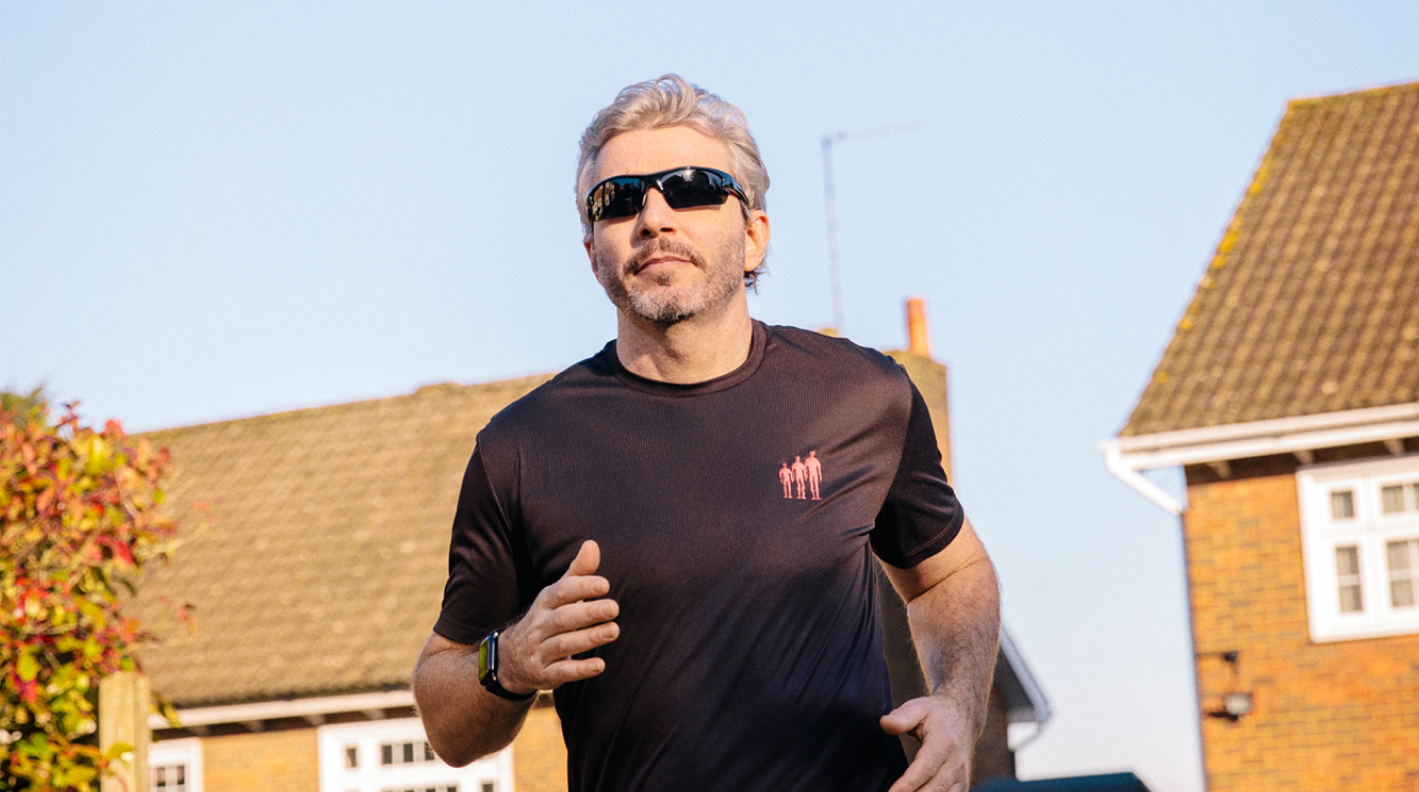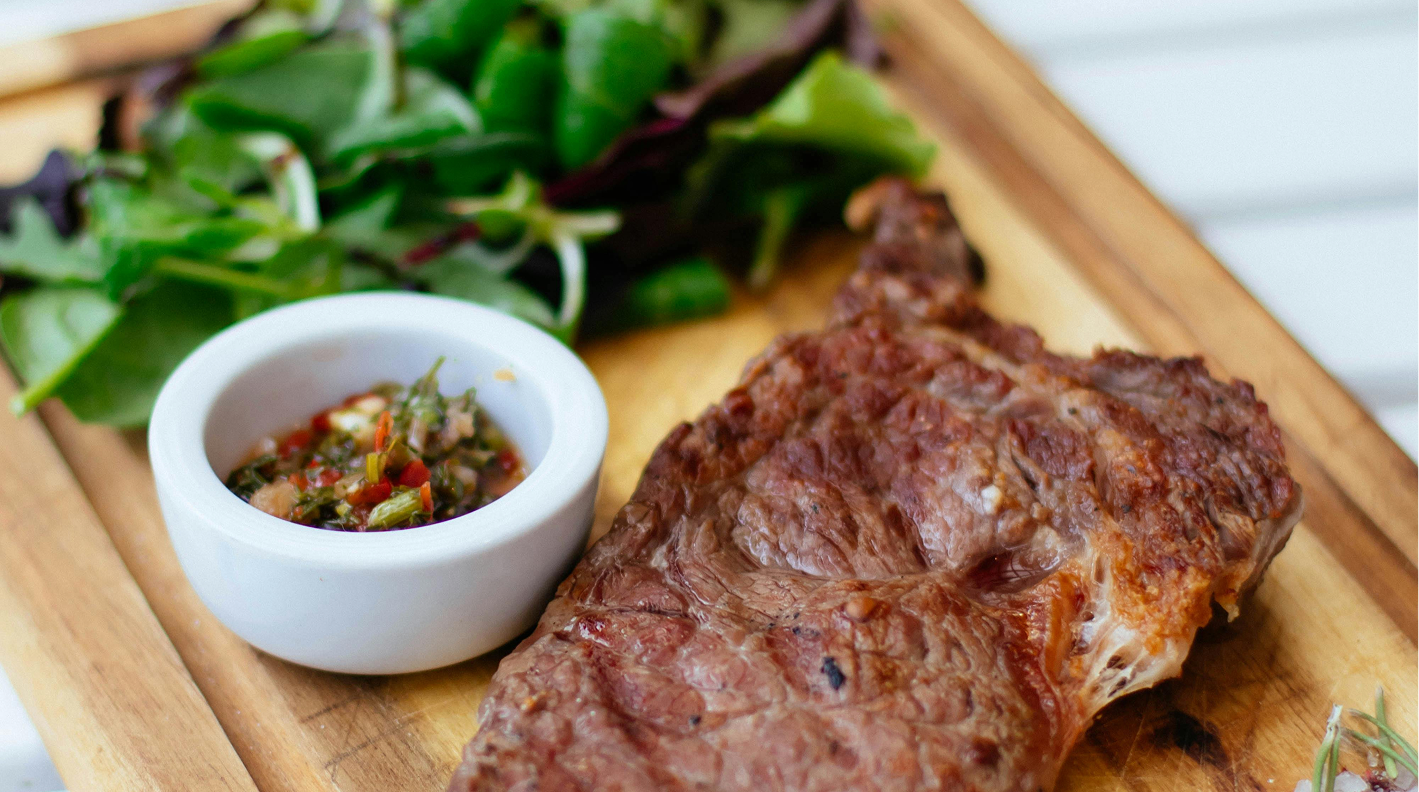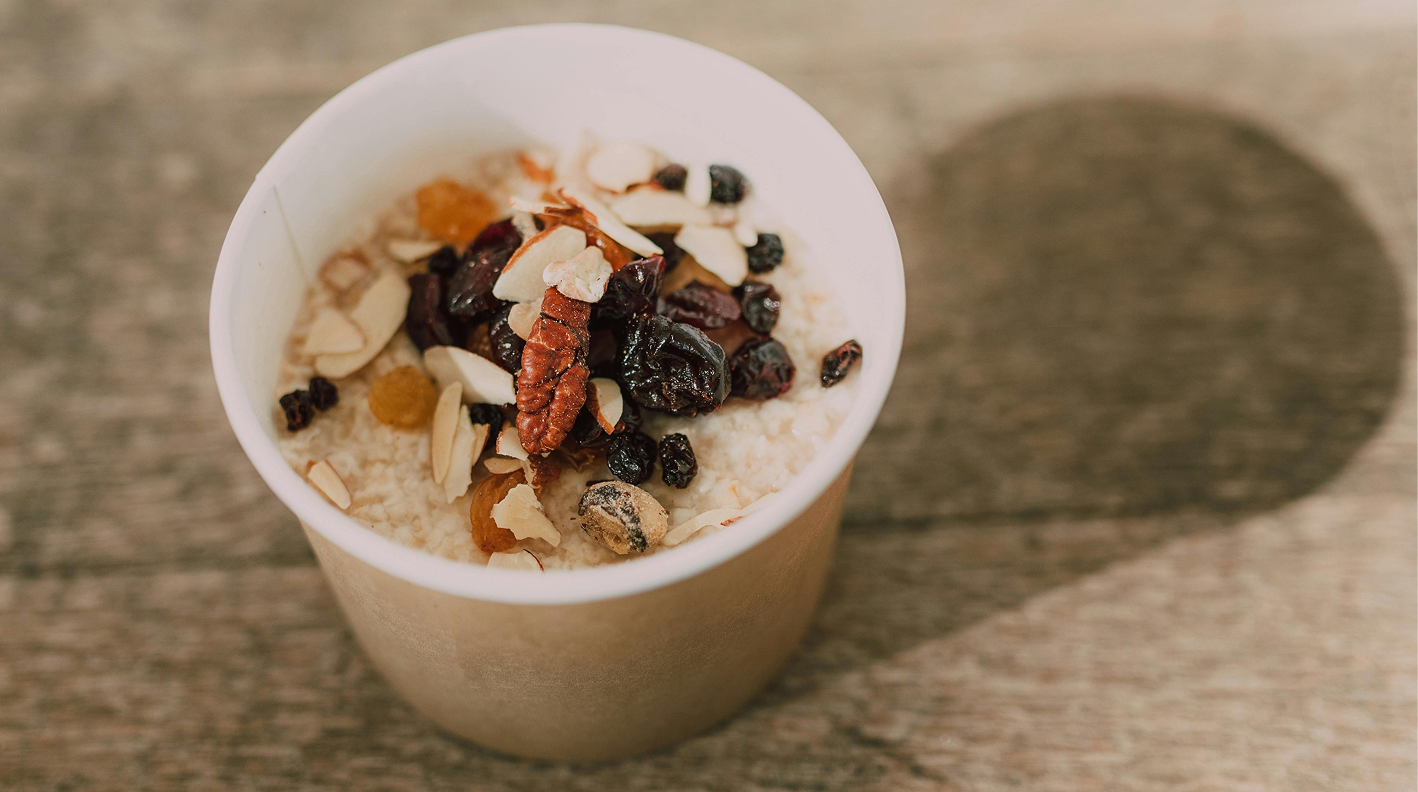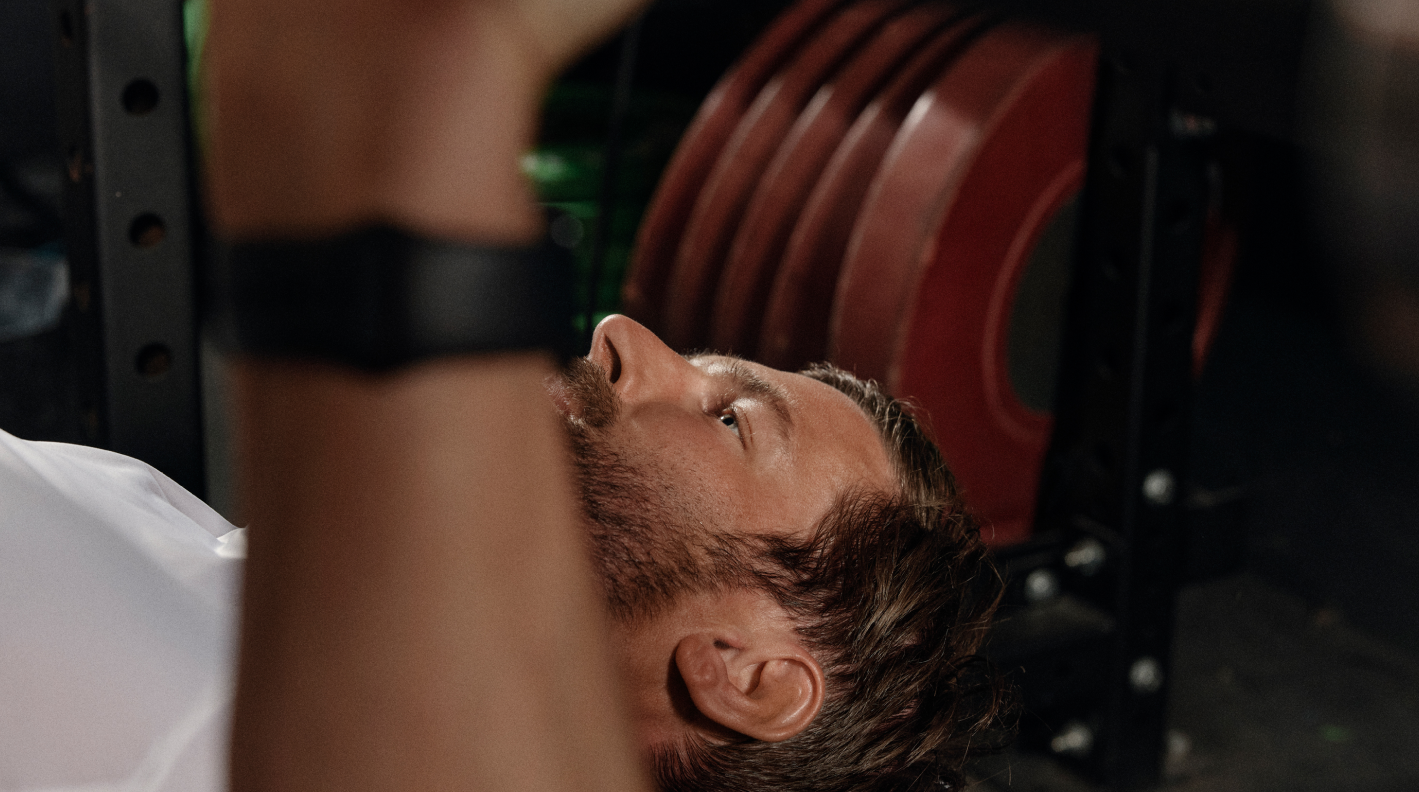Elevate your exercise endurance with Zone 2 training

Key takeaways
- Zone 2 refers to a low-intensity heart rate zone (60-70% of your max HR) that prioritises aerobic activity and uses fat as the primary energy source. It involves steady, manageable effort levels, often measured by being able to hold a conversation while exercising.
- This method enhances mitochondrial function, burns fat efficiently, improves VO2 max (aerobic capacity), supports faster recovery, and reduces stress and cortisol levels. It also helps regulate sleep, enhance endurance, and lower the risk of chronic diseases.
- Use activities like brisk walking, cycling, or light jogging for at least 45 minutes, 1-4 times a week. Calculate your Zone 2 range by determining 60-70% of your max HR or use the talk test to stay at the right intensity. Consistency is key to reaping long-term benefits.
It’s easy to fall into the trap that the only way to get faster is to train faster. Sure, speed work is important but so are long periods of light work.
Building our aerobic base through lighter work in Zone 2 provides a range of benefits but light work might feel too easy, so let’s dive in.
What is Zone 2?
When you work out, your heart rate increases and the exercise intensity determines how much it rises. For instance, a leisurely walk might cause a slight increase, while a high-intensity interval training session can elevate it significantly.
Heart rate during exercise is categorised into 5 training zones, each representing a percentage of your maximum heart rate (also known as max HR). These zones refer to varying levels of effort, with higher zones indicating greater intensity.
In Zone 2, you’re doing a fairly low-intensity type of aerobic training, going up to 60-70% of your max HR.
The fat-burning benefits of Zone 2 training
Your body has 3 different energy systems with the combined goal of producing energy through the creation of adenosine triphosphate or ATP.
Every single cell in your body uses ATP for energy, which means that every action you perform relies on it. Your body generates ATP in different ways and one of them is exercise. In Zone 2, you’re encouraging the mitochondria in your body to produce the most ATP.
So, the more you do Zone 2 exercises, the more mitochondria your body will produce to keep up with your activity and the more efficient these mitochondria will become.
In fact, Zone 2 training predominantly uses slow twitch (Type I) muscle fibres, which are dense in mitochondria — often referred to as the powerhouses of the cell — and preferentially burn fat, help process lactate, and resist fatigue.
This is why Zone 2 is often called the ‘fat burning’ zone — because it’s the ‘Goldilocks’ work rate for burning fat efficiently.
But it doesn't end there. Beyond relating to varying percentages of your max heart rate, each zone also relies on a different fuel source.
In Zone 2, your body turns to fat. But, if you were to do more intense exercise and bump up your heart rate to enter a higher zone, your body would start using other fuel sources like carbs.
That being said, many experts agree that all forms of exercise — regardless of heart rate zones — can help you lose body fat. It comes down to your preferences and whether a particular exercise routine is sustainable for you.
Others still say that several factors contribute to your body’s ability to burn fat, including genetics, eating habits, and the fact that the body doesn’t burn a lot of fat during exercise anyway [1].
Other benefits of Zone 2
When you're in Zone 2, your body burns more fat and recovers faster from your training load. Regular training can enhance your aerobic threshold and provide lasting benefits, including:
Improved mitochondrial function
Research suggests that Zone 2 exercises can improve the health of your mitochondria [2]. We know by now that mitochondria help with fat loss, but it doesn't end there.
They play a key role in your overall health, contributing to processes such as energy production, ageing and longevity, antioxidant defence, and organ function.
Having healthy mitochondria helps regulate your metabolism, support cell function and longevity, enhance endurance, reduce your risk of chronic illness, and regulate your calcium levels.
Boosted aerobic capacity
VO2 max refers to the maximum amount of oxygen your body can use, and it is a reflection of your endurance and aerobic fitness. With Zone 2 training, you can increase your body’s VO2 max, working towards a fitter and healthier you.
In fact, research shows that people with a higher VO2 max (like elite athletes) tend to live longer, have better brain function and heart health, and have a lower risk of cardiovascular problems such as heart disease, hypertension, and stroke [3][4].
Better recovery
Excessive high-intensity exercise can overwork your body and lead to a build-up of lactate in your muscles. As a result, you feel tired, and your body has a harder time recovering.
Zone 2 training, on the other hand, strengthens your muscles and heart without causing lactate accumulation — meaning you can use your recovery period more effectively.
Lower stress levels
Thanks to the moderate training intensity, Zone 2 exercise helps reduce your cortisol levels, as well as improve your focus and mental clarity [5].
Plus, similar to other types of movement, Zone 2 training releases endorphins, feel-good hormones that work to improve your mood, alleviate stress, reduce pain, and boost your well-being.
Not only will this improve your mental health [6], but it will also support your weight loss efforts, as high cortisol levels are closely linked to fat storage, particularly around the midsection.
Better sleep quality
Moderate-intensity exercise can help regulate your circadian rhythm, promote healthy sleep patterns, encourage your body to fall asleep around the same time every night, and, as a result, help you achieve more restful sleep [7].
If you struggle with sleep disturbances, Zone 2 training can also decrease the number of times you wake up at night since it lowers cortisol and makes it easier to wind down before bed [8].
How much Zone 2 training should you do?
If you’re targeting health benefits, 1-2 hours a week is a good place to start, while if you’re an aspiring centenarian, 3-4 hours a week is even better.
To maximise the benefits we listed before, each workout should last at least 45 minutes.
How do you calculate your Zone 2 heart rate?
The first step to determining your Zone 2 heart rate is to figure out your max HR, which you can do by deducting your age from 220 [9].
For example, if you’re 45 years old, your max heart rate would be 175 beats per minute/bpm (220-45 = 175). If you’re 55, it would be 165 (220-55 = 165).
Once you have this number, you can then find out your Zone 2 range, which is 60-70% of your max HR. For a 45-year-old, this would be 105-123 bpm. For a 55-year-old, Zone 2 would be between 99 and 116 bpm.
Using a fitness tracker or heart rate monitor can help you figure out your heart rate while you’re working out. Or, you can take your pulse manually by counting the number of heartbeats across 1 minute.
If you'd prefer a simpler method, the talk test is another good way to gauge whether you’re in Zone 2. While you’ll likely be a bit out of breath, you should still be able to hold a conversation without broken sentences.
Another easy approach is to monitor your RPE or rate of perceived exertion. During a Zone 2 workout, you should feel like you're exercising at a level 2 or 3 out of 10.
Getting started with Zone 2 training
Staying in the zone can be tough as you can easily creep into a higher intensity that feels manageable but is no longer Zone 2. Below are some ways you can incorporate Zone 2 training into your routine:
Beginner
Brisk incline walk
- Convenient and accessible for most people (treadmill or outdoors)
- Low impact on joints/muscles
Cycling
- Easy to adjust the intensity on an exercise bike to stay in Zone 2
- Low impact on joints
Advanced
Light jog
- Convenient, no equipment required
- Easy to enter Zone 3 or higher unless well-established base cardiorespiratory fitness
Hiking or rucking
- For the well-trained individual, adding a rucksack to your hike is a good option to enter Zone 2 faster and develop core and lower limb strength
- Lower stress on joints compared to running
Swimming
- Requires a proficient technique to be able to stay in Zone 2
- Full-body workout
- Great option in summer if you’re near a pool or beach
Paddle sports
- Targeted upper body and core workout
- Get out in nature! Explore your local rivers, lakes or oceans
- Can be weather-dependent
Rowing
- Near full-body workout engaging muscles in arms, legs, back and core
- Can be very difficult to remain in Zone 2 unless well-established technique and strength
What if I keep stretching into Zone 3?
If you happen to enter Zone 3 in your next workout, it's not the end of the world. You will certainly generate some overlapping physiological adaptations similar to Zone 2 or HIIT, and while it may not be optimal, it’s better than nothing.
Sometimes momentum is more important than anything so our main piece of advice is not to get too obsessed about it.
Focussing on remaining in Zone 2 becomes important for those who are trained and keen to squeeze the most out of their performance and health.
Ready to give Zone 2 training a try? If you’re finding it hard to figure out what kind of training you should do, for how long and how often, reaching out to a professional can help.
At Compound, we’re dedicated to helping you live better, for longer. Our Body Transformation Programme combines medical treatments, prescriber support and personalised guidance to help you not just lose weight but completely transform your body and health for life.
- Breakthrough medication: Lose up to 21% of your body weight in 72 weeks with once-weekly, clinically proven treatment. It keeps you feeling fuller for longer, so eating less feels natural. Pair them with the Compound Code to lock results in for good.
- Compound Code: Our medication creates opportunity — Compound helps you seize it. Our proven system makes your treatment work harder. The Compound Code builds the muscle, energy, and fitness that medication alone can't deliver. Our holistic approach transforms not just how you look, but how you feel and function daily. So when you eventually finish treatment, your results don't disappear with it.
It’s easy to fall into the trap that the only way to get faster is to train faster. Sure, speed work is important but so are long periods of light work.
Building our aerobic base through lighter work in Zone 2 provides a range of benefits but light work might feel too easy, so let’s dive in.
What is Zone 2?
When you work out, your heart rate increases and the exercise intensity determines how much it rises. For instance, a leisurely walk might cause a slight increase, while a high-intensity interval training session can elevate it significantly.
Heart rate during exercise is categorised into 5 training zones, each representing a percentage of your maximum heart rate (also known as max HR). These zones refer to varying levels of effort, with higher zones indicating greater intensity.
In Zone 2, you’re doing a fairly low-intensity type of aerobic training, going up to 60-70% of your max HR.
The fat-burning benefits of Zone 2 training
Your body has 3 different energy systems with the combined goal of producing energy through the creation of adenosine triphosphate or ATP.
Every single cell in your body uses ATP for energy, which means that every action you perform relies on it. Your body generates ATP in different ways and one of them is exercise. In Zone 2, you’re encouraging the mitochondria in your body to produce the most ATP.
So, the more you do Zone 2 exercises, the more mitochondria your body will produce to keep up with your activity and the more efficient these mitochondria will become.
In fact, Zone 2 training predominantly uses slow twitch (Type I) muscle fibres, which are dense in mitochondria — often referred to as the powerhouses of the cell — and preferentially burn fat, help process lactate, and resist fatigue.
This is why Zone 2 is often called the ‘fat burning’ zone — because it’s the ‘Goldilocks’ work rate for burning fat efficiently.
But it doesn't end there. Beyond relating to varying percentages of your max heart rate, each zone also relies on a different fuel source.
In Zone 2, your body turns to fat. But, if you were to do more intense exercise and bump up your heart rate to enter a higher zone, your body would start using other fuel sources like carbs.
That being said, many experts agree that all forms of exercise — regardless of heart rate zones — can help you lose body fat. It comes down to your preferences and whether a particular exercise routine is sustainable for you.
Others still say that several factors contribute to your body’s ability to burn fat, including genetics, eating habits, and the fact that the body doesn’t burn a lot of fat during exercise anyway [1].
Other benefits of Zone 2
When you're in Zone 2, your body burns more fat and recovers faster from your training load. Regular training can enhance your aerobic threshold and provide lasting benefits, including:
Improved mitochondrial function
Research suggests that Zone 2 exercises can improve the health of your mitochondria [2]. We know by now that mitochondria help with fat loss, but it doesn't end there.
They play a key role in your overall health, contributing to processes such as energy production, ageing and longevity, antioxidant defence, and organ function.
Having healthy mitochondria helps regulate your metabolism, support cell function and longevity, enhance endurance, reduce your risk of chronic illness, and regulate your calcium levels.
Boosted aerobic capacity
VO2 max refers to the maximum amount of oxygen your body can use, and it is a reflection of your endurance and aerobic fitness. With Zone 2 training, you can increase your body’s VO2 max, working towards a fitter and healthier you.
In fact, research shows that people with a higher VO2 max (like elite athletes) tend to live longer, have better brain function and heart health, and have a lower risk of cardiovascular problems such as heart disease, hypertension, and stroke [3][4].
Better recovery
Excessive high-intensity exercise can overwork your body and lead to a build-up of lactate in your muscles. As a result, you feel tired, and your body has a harder time recovering.
Zone 2 training, on the other hand, strengthens your muscles and heart without causing lactate accumulation — meaning you can use your recovery period more effectively.
Lower stress levels
Thanks to the moderate training intensity, Zone 2 exercise helps reduce your cortisol levels, as well as improve your focus and mental clarity [5].
Plus, similar to other types of movement, Zone 2 training releases endorphins, feel-good hormones that work to improve your mood, alleviate stress, reduce pain, and boost your well-being.
Not only will this improve your mental health [6], but it will also support your weight loss efforts, as high cortisol levels are closely linked to fat storage, particularly around the midsection.
Better sleep quality
Moderate-intensity exercise can help regulate your circadian rhythm, promote healthy sleep patterns, encourage your body to fall asleep around the same time every night, and, as a result, help you achieve more restful sleep [7].
If you struggle with sleep disturbances, Zone 2 training can also decrease the number of times you wake up at night since it lowers cortisol and makes it easier to wind down before bed [8].
How much Zone 2 training should you do?
If you’re targeting health benefits, 1-2 hours a week is a good place to start, while if you’re an aspiring centenarian, 3-4 hours a week is even better.
To maximise the benefits we listed before, each workout should last at least 45 minutes.
How do you calculate your Zone 2 heart rate?
The first step to determining your Zone 2 heart rate is to figure out your max HR, which you can do by deducting your age from 220 [9].
For example, if you’re 45 years old, your max heart rate would be 175 beats per minute/bpm (220-45 = 175). If you’re 55, it would be 165 (220-55 = 165).
Once you have this number, you can then find out your Zone 2 range, which is 60-70% of your max HR. For a 45-year-old, this would be 105-123 bpm. For a 55-year-old, Zone 2 would be between 99 and 116 bpm.
Using a fitness tracker or heart rate monitor can help you figure out your heart rate while you’re working out. Or, you can take your pulse manually by counting the number of heartbeats across 1 minute.
If you'd prefer a simpler method, the talk test is another good way to gauge whether you’re in Zone 2. While you’ll likely be a bit out of breath, you should still be able to hold a conversation without broken sentences.
Another easy approach is to monitor your RPE or rate of perceived exertion. During a Zone 2 workout, you should feel like you're exercising at a level 2 or 3 out of 10.
Getting started with Zone 2 training
Staying in the zone can be tough as you can easily creep into a higher intensity that feels manageable but is no longer Zone 2. Below are some ways you can incorporate Zone 2 training into your routine:
Beginner
Brisk incline walk
- Convenient and accessible for most people (treadmill or outdoors)
- Low impact on joints/muscles
Cycling
- Easy to adjust the intensity on an exercise bike to stay in Zone 2
- Low impact on joints
Advanced
Light jog
- Convenient, no equipment required
- Easy to enter Zone 3 or higher unless well-established base cardiorespiratory fitness
Hiking or rucking
- For the well-trained individual, adding a rucksack to your hike is a good option to enter Zone 2 faster and develop core and lower limb strength
- Lower stress on joints compared to running
Swimming
- Requires a proficient technique to be able to stay in Zone 2
- Full-body workout
- Great option in summer if you’re near a pool or beach
Paddle sports
- Targeted upper body and core workout
- Get out in nature! Explore your local rivers, lakes or oceans
- Can be weather-dependent
Rowing
- Near full-body workout engaging muscles in arms, legs, back and core
- Can be very difficult to remain in Zone 2 unless well-established technique and strength
What if I keep stretching into Zone 3?
If you happen to enter Zone 3 in your next workout, it's not the end of the world. You will certainly generate some overlapping physiological adaptations similar to Zone 2 or HIIT, and while it may not be optimal, it’s better than nothing.
Sometimes momentum is more important than anything so our main piece of advice is not to get too obsessed about it.
Focussing on remaining in Zone 2 becomes important for those who are trained and keen to squeeze the most out of their performance and health.
Ready to give Zone 2 training a try? If you’re finding it hard to figure out what kind of training you should do, for how long and how often, reaching out to a professional can help.
At Compound, we’re dedicated to helping you live better, for longer. Our Body Transformation Programme combines medical treatments, prescriber support and personalised guidance to help you not just lose weight but completely transform your body and health for life.
- Breakthrough medication: Lose up to 21% of your body weight in 72 weeks with once-weekly, clinically proven treatment. It keeps you feeling fuller for longer, so eating less feels natural. Pair them with the Compound Code to lock results in for good.
- Compound Code: Our medication creates opportunity — Compound helps you seize it. Our proven system makes your treatment work harder. The Compound Code builds the muscle, energy, and fitness that medication alone can't deliver. Our holistic approach transforms not just how you look, but how you feel and function daily. So when you eventually finish treatment, your results don't disappear with it.
- https://www.ncbi.nlm.nih.gov/pmc/articles/PMC5766985/
- https://www.mdpi.com/2227-9032/9/3/249
- https://www.ncbi.nlm.nih.gov/pmc/articles/PMC6607712/
- https://scholar.googleusercontent.com/scholar?q=cache:pwRx4L64z28J:scholar.google.com/&hl=en&as_sdt=0,5
- https://www.nature.com/articles/s41598-023-33063-9
- https://www.ncbi.nlm.nih.gov/pmc/articles/PMC9780502/
- https://bmjopensem.bmj.com/content/5/1/e000647.abstract
- https://ejim.springeropen.com/articles/10.1186/s43162-023-00247-8
- https://sportsci.org/2009/ss.htm












